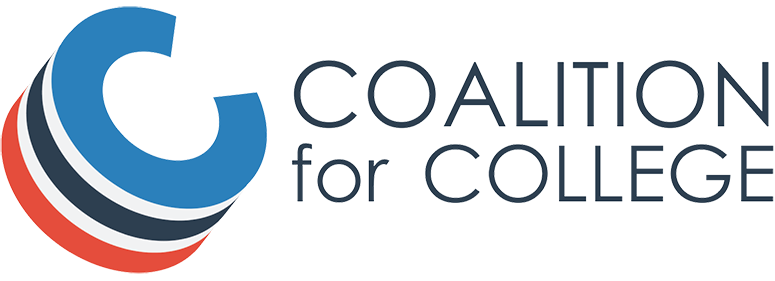EPS College Counseling Program
- Students are paired with their Writing Coach and Process Coach in the winter/spring of their sophomore year.
- The advisor provides support for students as they take classes, navigate the EPS program, and work their way through the high school years.
- The Process and Writing Coaches help the student frame and reflect on their experience and achievement in the Upper School program, then apply that thought to the college search and application process.
- Students and parents are welcome to initiate a meeting with any member of the CC staff at any point in the student’s Upper School career. The College Counseling office will schedule three formal family meetings which include parents/guardians and student. Two in the junior year, and another in the early fall of senior year. The first meeting will include the Process Coach and Writing Coach. The spring meeting is with the Process Coach alone. Then the fall meeting will include the Process Coach and Bart Gummere.
- The Writing Coaches also hold spring meetings with small groups of juniors, and then follow those group meetings with at least one individual meeting in the spring with each counselee. From there, each student schedules meetings and/or consultations frequently throughout the end of the application process. It is usual for students to have these meetings at least 3-5 times through the process, and not unusual to exceed that number. This is a student choice.
- Families are welcome to talk with any member of the college counseling team as often as desired about financial planning and financial aid. We also can recommend outside resources if preferred.
- EPS also coordinates with other independent schools in the area to hire College Money Matters to do general financial aid education and advising. That programming is open to all EPS families.
- In short, no. The EPS College Counselors provide the support and advice any outside counselor would, with the very real benefit of knowing your student and the EPS academic program.
- In addition, with our expanded college counseling program, your student will have a Process Coach was well as a Writing Coach. Bart Gummere is also available to assist each student in the construction of their college list.
- In the case when families do hire outside assistance, EPS asks that families share this information and connect the outside resource to the counseling team here. We will work best and most effectively for each student when in clear communication with any other personnel.
Standardized Testing
- This should be a family decision. Students who decide to do test prep often wait to get diagnostic results back on a first test, using those results to focus their test prep near the time of their second test. It is most effective to do test prep immediately prior to a test-taking date. EPS will arrange and coordinate an opportunity for 10th graders to take both a practice ACT and SAT.
- We recommend that students take a standardized test (ACT and/or SAT) at least two times: once or twice between January and June in their junior year and once in the senior fall.
- Some students may be served well by a third testing, but this is the exception.
- An increasing number of colleges and universities are choosing to go to a test-optional or even test-blind admission policy. Students are often taking fewer sittings of any test in this environment.
Both tests measure the same kinds of content, and both are used for college admissions and merit scholarships. The SAT underwent a big revamp in 2016 and the two tests are now more similar than they used to be. A few key differences remain:
- The ACT includes a Science section; the SAT does not.
- The SAT includes one Math section for which the use of a calculator is prohibited; a calculator is allowed on all Math sections of the ACT.
- The ACT is scored on a scale of 1-36, while the SAT is scored on a scale of 400-1600.
The Princeton Review does a nice job of comparing the two tests across multiple criteria: http://www.princetonreview.com/college/sat-act
- No. Almost all schools will accept either the SAT or the ACT.
- A student’s application is considered in the context of the EPS academic program. EPS does not offer AP courses (a common trait among independent schools across the country), so the lack of AP designation does not negatively impact the strength of a student’s program. Thanks to the EPS School Profile we supply with every application and the relationships we build with colleges, admissions representatives know our curriculum and understand the high level of academic work required from our students.
- Although we do not teach AP courses, we do facilitate many AP Exams each May on campus. EPS students often elect to take at least one exam. EPS teachers can advise students about the degree to which our classes cover content for specific AP exams, and how much a student may need to study independently to prepare for an exam.
The College Search
- Students will receive their registration codes in a class meeting in the spring of their sophomore year.
- Parents will receive their registration codes in the fall of their student’s junior year.
- Katie Yost will send you an invitation from the SCOIR system.
- This email will be sent from automated@scoir and will likely end up in your junk folder.
- The email will provide instructions on how to complete your registration.
- Students should first remember this is their personal list. It should be led by their interests and criteria, not the preferences of their peers.
- Students can begin research and adding to their “Following” list on SCOIR as soon as they wish after receiving access to SCOIR in their sophomore year.
- In December of the junior year, students will complete a detailed questionnaire, designed in part to help them and their counselor think further about possible schools of interest.
- After considering each student’s interests, Process Coaches will work with each junior to identify colleges and universities of interest. Students will often place these institutions on their SCOIR list.
- By the close of the junior year the expectation is that students have 15-20 schools on the “Following” list.
- Typically, EPS students apply to between 8-12 schools.
- For a variety of reasons, some students are well-served by a slightly longer list. In almost all cases we recommend against lists exceeding 15.
- We recommend that students visit enough college campuses by the start of their senior year that they develop a strong general picture of what they desire and what works best for them.
- Some students visit several campuses before submitting applications; others visit only a few and then wait for admission decisions from colleges.
- Each student’s Process Coach will help guide the process of visits according to family preferences, schedule, etc.
Applications
- The Common Application is an application form accepted by over 900 colleges. While each college may ask for some institution specific information, using the Common Application streamlines the process by allowing students to fill out all basic information just once.
- About 80% of the schools to which our students apply accept the Common Application.
- Schools that do not accept the Common App have their own online application systems or, in a few cases, demand paper submissions. Generally, these are larger state colleges and universities.
- The Common Application allows a maximum of 650 words. Each year the Common App includes 5-6 general essay prompts; the student chooses which one to respond to. The same essay can be submitted to every school that accepts the Common App.
- While many schools accept the Common App, some use independent application systems (the University of California schools are a prime example). Their essay prompts may be similar to those of the other platforms, or they may be school-specific. It’s important to check the admissions pages for each individual school to which you are applying and keep track of which questions each requires or recommends you answer.
- Beyond the personal statement, many schools require supplemental responses to questions that are more specific to that institution.
- Early Decision (ED) applications are binding, with the student committing to attend if accepted.
- Early Action (EA) applications are non-binding, giving the student opportunity to express strong interest and the school to fill its freshman class earlier. In most cases, students may apply to multiple schools using Early Action.
- Restrictive Early Action (REA) applications are also non-binding, giving the student opportunity to express strong interest and the school to fill its freshman class earlier. Colleges offering this option ask students to agree to restrict the number of applications they can submit to other private and/or public colleges.
- Each of these programs require filing at an earlier date than the regular deadline. The chief advantage comes in hearing a result at an earlier date. In some cases, filing under an early plan can increase the likelihood of admission. This increase can vary from negligible to significant. The Process Coach will help analyze this nuance for each EPS applicant.
- It is always the student’s responsibility to read and know the policies of any school to which they are applying.
- This varies between institutions. Most schools require a counselor recommendation and two teacher recommendations.
- In other cases, schools allow or require more or less than two teacher recommendations. Some schools specifically ask students not to submit any recommendations.
- EPS students will ask two teachers to write recommendations, while the college counseling team will prepare a personalized counselor recommendation for each senior.
- Students are asked to request one teacher recommendation in June of the junior year and to request a second around September 1 of the senior year.
- Teacher recommendations and a counselor recommendation are sent electronically by the Process Coach to each school a student applies to.
- Students need to arrange with ACT or The College Board (SAT) to have their scores sent to each college to which they are applying when that college requires an official report at the time of application. Increasingly, colleges will allow students to self-report test scores on the application and require official reports only at the point the student decides to matriculate.




